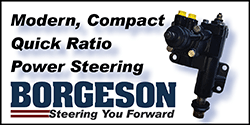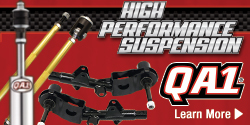BSB67
Well-Known Member
I don’t think how much you drive it on the street has any bearing on using a DP carb at all.
If you get a reasonable DP carb for the application and tune it, it will be no different than a similar sized, properly tuned VS carb.
Carbs don’t push fuel. The vacuum signal created by the engine draws fuel from the carb. The DP carb drives on the on the front barrels just like a VS carb, until you push the pedal pretty far down.
Some DP carbs, because of there design parameters and intended use will not be well suited on some mild street cars. This is because the starting point is too far off the mark and many hobbyists simply don’t have the tools and know-how to bring the tune around. That said, a 430 hp 440 will be able to handle pretty well many DP carbs.
If you get a reasonable DP carb for the application and tune it, it will be no different than a similar sized, properly tuned VS carb.
Carbs don’t push fuel. The vacuum signal created by the engine draws fuel from the carb. The DP carb drives on the on the front barrels just like a VS carb, until you push the pedal pretty far down.
Some DP carbs, because of there design parameters and intended use will not be well suited on some mild street cars. This is because the starting point is too far off the mark and many hobbyists simply don’t have the tools and know-how to bring the tune around. That said, a 430 hp 440 will be able to handle pretty well many DP carbs.


















